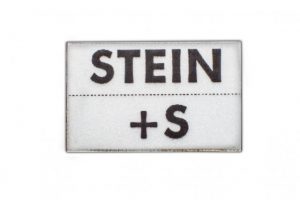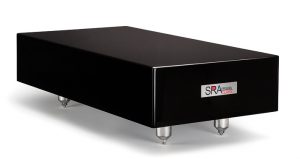It was with great pleasure that I unpacked the newest isolation board from Janusz Rogoz, which is marked as the 3RP1/BBS. Large and heavy, employing the BBS (Balancing Board System) and nicely done, it is an idea developed by the business owner for quite some time now. I perfectly remember my first contact with the company, which came by way of my review of the CPPB16 board for the Polish magazine Audio. It was heavy and featured grounding. Each next board I came across, first the 3SG40, followed by the 4SG50/BBS, was better and even more nicely made. Each one of them was also better at shaping the sound of the components it supported.
Even before it arrived for a review, the newest board was to some extent already known to me. Mr. Janusz Rogoz, the owner of Rogoz Audio and its designer, prepared for High Fidelity's 10/10 anniversary contest a hi-fi rack that was based on the same design assumptions. It was the official launch of a new product line and I am proud that it took place in High Fidelity.
The four massive feet joined the platforms with its "floating" shelves. The top shelf is decoupled from the lower, fixed base with the Balancing Board System (BBS). It consists of three parts: a high quality steel spike (or cone), a "cap" protecting the spike and a cradle of high-quality steel, in the shape of a large sector of the sphere, to support the cap. In the "competition" version, the latter were made of NZ3 high silicon steel and painted with red gloss paint. Such components were prepared only once for this special unit. In the regular version, they are made of carbon polymer.

The idea behind the BBS is that the contact point between the cone and the carbon steel intermediate element prevents any movement of the two elements relative to their own axis, but allow a swinging movement. In contrast, the contact between the intermediate component and the cradle fixed to the tabletop allows limited rolling and sliding motion. The advantages of point support on the cones were thus combined with the effects of vibration damping resulting from sliding and rolling friction.
The 3RP1/BBS is a large platform that was designed for large amplifiers to be placed on the floor. In the words of Mr. Rogoz, the platforms as well as hi-fi racks and speaker stands offered by him are highly customized and can be manufactured in any size and finish to meet individual request from distributors, dealers and end customers. The unit sent in for a review had been specially designed to be relatively large, so as not to limit the size of audio components placed on it during the auditions. The owner of Rogoz Audio emphasizes that the board was created not only for large amplifiers to be seated on the floor, but rather as a universal platform to be used both on furniture and on the floor. It was designed for all audio components—digital sources, analog turntables, amplifiers, preamplifiers, power amplifiers, DACs, etc.
Because I'd reviewed all previous platforms from Rogoz Audio with audio sources, preamplifiers and small integrated amplifiers, I placed the new model on the Finite Elemente Pagode Edition rack and compared it against my adjacent Acoustic Revive RAF-48H air floating board that had long been serving as my reference point for all other isolation boards.
Since the spikes in the Polish construction are widely spread, the pads under them were not in the decoupled (spikes) shelf, and directly on the frame top shelf. To not let the pads slip, I put under them the Acoustic Revive CP-4 chloroprene insulators, made of material that converts mechanical energy into electrical energy, dumped in the form of heat. During the CD player auditions I was using both cases the feet Franc Audio Accessories Ceramic Disc. Speakers involved comparing the A / B / A, where A was the platform Rogoz Audio and Acoustic Revive B platform.
The whole set includes:
- The board
- Four high-adjustable spikes to level the board
- BBS system between the shelves
- Four massive discs to protect the floor
SOUND
Albums auditioned during this review
- Vangelis, Spiral, RCA/BMG Japan 176 63561, K2 SHM-CD (1977/2008).
- Marc Copland & John Abercrombie, Speak To Me, Pirouet Records PIT3058, CD (2011).
- Carol Sloane, Hush-A-Bye, Sinatra Society of Japan/Muzak, XQAM-1031, CD (2008).
- Guru Guru, Live in Germany '71, Cleopatra Records CLP 6844-2, CD (2011).
I have all but forgotten how beautiful Carol Sloane's album Hush-A-Bye is. I bought it just after it had been issued by Sinatra Society of Japan on HQCD. Since then I have been returning to this record more frequently than to others from that series. Sloane herself is enchanting here, together with her band, as are the compositions, arrangements and flawless execution. While it would have been an exceptional disc even without the latter, the warm, deep and unusually resolving recording helps the instruments to become real and the vocalist to materialize in front of us when played back on a good system. It is an obvious cliché that is usually said in such moments, but this time the cliché "becomes flesh."
The acoustic plays the major role here in building up the sense of "presence". The vocals were recorded with lots of air, which contrasts with the very closely "snapped up" instruments. Admittedly, the latter do have some reverb, but not as much as Sloane herself. For me, the most impressive has always been track no. 3 titled Guess Who I Saw Today. Composed by Murray Grand, with Elisse Boyd's lyrics, it is a story of a woman who went out shopping and by chance stepped into a café, where she saw a beautiful couple of lovers by the bar. She found herself looking at them with real pleasure, enjoying their happiness. It is only the final "I saw you" that turns the whole story up-side down. A melancholic, gentle and almost casually delivered song becomes a drama.

This song, originally composed for the musical New Faces of 1952 was recorded in a different way than the other tracks. The instruments are shown close up on the far sides of both channels whereas Carol Sloane's vocals are moved deep into the soundstage as if she sang to a microphone standing a few meters away. It makes us see the scene as if were looking through a window into someone's house and in the background, maybe in the kitchen or in the living room, saw a woman talking to her husband. Even though the composition has been performed by many a vocalist including such outstanding artists as June Caroll, Carment McRay and Julie London no single other version makes such an impression on me as one on Hush-A-Bye.
The high resolution and tonal balance of an audio system is of paramount importance here to properly convey this composition. What needs to be presented are two totally different scenic "situation" of the instruments and the vocalist. Her vocals sounds brighter and higher but it is not over-bright. It simply because of the space between us and (the microphone) vocals that reduces the amount of bass which we tend to perceive as a greater distance.
An audio system can behave in various ways to handle it. The Ancient Audio CD player and the AbysSound preamplifier that I auditioned seated on the Rogoz Audio board presented everything larger and slightly closer than on the Acoustic Revive RAF-48H air board. Bringing the perspective closer did not however mean shortening it. "Something good is cooking here" was my immediate reaction.
Mr. Janusz's board brings the planes closer enlarging them and making them more palpable. Sloane's vocals, hidden deep in the mix, remained distant. At the same time they were stronger and bigger by which they seemed to be closer. Their lower midrange, somewhat thinner with the Japanese board for a more distant presentation, was stronger and more saturated with the Rogoz Audio board under review.
This is the first isolation board, maybe with the possible exception of the Finite Elemente Pagode Edition HD-09, whose tonality was denser and its tonal balance set lower than that of the air board from Japan, which is my reference. All other boards, even the best ones, lifted the balance which resulted in thinning somewhat the midrange. Given a high enough quality of the board there were certain advantages to that particular effect such as improved selectivity, stronger attack resulting in a more open sound and better dynamics. All these are good. I could get no complete satisfaction, though. It was soon over replaced with curiosity and respect for the designers. Still, the lack of full satisfaction remained. This time the respect was completed with fulfillment. As if I spotted in the weeds scattered on the beach a lump of amber glowing warmly in the setting sun. Fully aware it was not gold I accepted its attraction.
The similar things happen to components seated on the 3RP1/BBS. Sloane was an ideal "tool" to assess tonality and perspective. Listening to Vangelis's Spiral (K2 SHM-CD) I could evaluate the dynamics and bass extension whereas Speak To Me from the duo of Marc Copland and John Ambercobie was a great test of resolution. All these sonic aspects deserved praise and were simply very good. The later album is rather muffled in character and only a quality audio system can bring out an internal chemistry between the musicians. The Japanese board reveals lots of detail and presents planes better than any other retaining the dark character of the recording at the same time. The Rogoz Audio board enlarged phantom images and put the two musicians in the same row both in terms of distance from us and tonality. It sounded great. Still, it was evident that the low level signals were somewhat homogenized. The whole is more important than detail, though. The RAF-48H sounds slightly more laid-back in comparison.
Conclusion
The music is alive and flowing with this board. It is presented in a unique way, with larger phantom images, unrestrained dynamics and the background where it should be. The background remains stable and well differentiated it is somehow closer to us, however. Rather obvious change in tonality results from more energy in the lower midrange. The sound simply seems to be louder. When the CD player was seated on the RAF-48H I had to increase the output by 1 dB for the subjective volume level to be similar to that on the 3RP1/BBS.
It is a really good design and I am very pleased to say that the products from Mr. Janusz Rogoz are getting increasingly better and that the audio evolution in his case produces sweet fruits indeed. The design under today's review allows for a comfortable listening to both well recorded and exquisitely pressed CDs as well as ordinary editions including bootleg-like concert recordings such as Live in Germany '71 by the krautrock band Guru Guru, issued in a beautiful box by Cleopatra Records in 2011. The guitars were meaty the drums had the "oomph" and the weirdly captured vocals were not muffled, even though they sound as if they had been recorded through a thick woolen scarf. This is the best board from Mr. Rogoz I could lay my hands on, not to mention the fact that it simply sounds great. Highly recommended for any audio system!
DESIGN
This is a fairly large board capable of supporting components up to 100 kg. Hence it could be an ideal partner not only to front ends and preamplifiers but also to massive power amplifiers. It is 142 mm high measured 600 wide and 560 mm deep. It consists of two main parts to be assembled by the buyer: the base and a "floating" board that supports the components. 30 mm thick top shelf is a sandwich made of MDF and HDF. The base is made of MDF braced from top and bottom by solid HDF beams. It looks like a flattened H letter. The shelf and the beams are coupled with the four S235JR carbon steel bolts.
The base is supported on the four high carbon steel alloy spikes and brass locking nuts. They are used to level the shelf. The spikes rest on four, quite large discs. Identical spikes but three in number decouple the base from the board. The "floating" board sports three large sectors of the sphere with spikes in their centers. The spikes have carbon polymer protecting caps on them. The system has the patent pending (UPRP P.404137) under the name Balancing Board System (BBS). The wooden parts are coated in thick high gloss paint looking like a grand piano finish only grey.
Specifications
- Total height: 142 mm
- Total width: 600 mm
- Total depth: 560 mm
- Feet profiles: MDF sandwich + HDF + 4 S235JR carbon steel cores
- Top shelf: MDF + HDF sandwich, 460 x 560 x 30 + 30 mm
- Maximum load: up to 100 kg
- Price (in Poland): 2,800 PLN
Rogoz Audio
504 080 690
MADE IN POLAND
Text and images by Wojciech Pacuła
Translation by Andrzej Dziadowiec











































